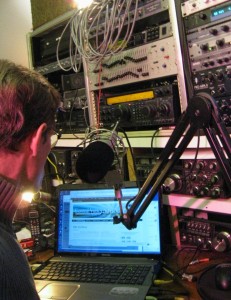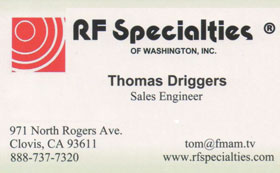The Society of Broadcast Engineers’ Chapter of the Air
Want to receive an email reminder the day before, and the hour before, each monthly SBE HAMnet broadcast (HF or IRLP)? Members of the SBE can contact Scott Jones at the SBE National Office at kjones@sbe.org or (317) 846-9000. Provide Scott with the email address you wish to use and he will add you to the list to receive timely email reminders!
HAMnet, the Society of Broadcast Engineers’, “Chapter of the Air,” was developed more than 25 years ago for those HAM operator-members who are not in close proximity to local SBE chapters. It’s a great way for broadcast engineers and other amateurs (all are welcome) to contact one another, share technical information, discuss broadcasting techniques and get the latest information on SBE programs and activities on a monthly basis
The “HF” HAMnet takes place on the second Sunday of every month at 0000 GMT. Hal Hostetler, CPBE, WA7BGX, serves as Net Control. The published frequency is 14.205 MHz. Occasionally, that frequency is busy and you may need to move up (no more than 10 kHz) to find the SBE meeting. Hal is a long-time television engineer based in Tucson, Ariz.
Joining the “HF” version of HAMnet is The Internet Repeater Linking Project, or IRLP. The SBE IRLP HAMnet is based in Denver using the N0PQV repeater 145.340, IRLP node #3350, on the first Saturday of each month at 11:00 am, U.S. Mountain Time, 1:00 pm Eastern and, worldwide via the IRLP reflector 9615. All of this information can also be referenced at http://www.sbe.org/sections/IRLP.php. And now, the SBE IRLP Reflector, Node 9615 is now connected to the world via Echolink. Amateurs can access the reflector via Echolink using a computer as well as via radio. This reflector is also connected full time to the WA2CBS repeater in New York City. Details on the Echolink connection are at http://glirlp.org/9615-sbe/. It is also connected full time into the 9615 Reflector for communications.
The IRLP is a method of connecting different repeaters across the country and the world via the Internet. A “HAM” in Denver, using the N0PQV repeater for example, enters a 4-digit node number to connect to, 9615 the Great Lakes Repeater Group IRLP reflector in Grand Rapids Michigan. For the SBE IRLP HAMnet, the net control station connects to the Denver IRLP reflector, which allows other repeaters and the Echolink system from all over the world to connect to it, creating a net that all can hear from their local repeater.
Jack Roland, CBRE, CBNT, who developed the idea of using the IRLP as a way to get SBE members together, said, “We came up with the idea for this net because the SBE HF “Chapter of the Air” is not always accessible by “HAMS” who cannot erect HF antennas and because of the HF band’s susceptibility to HF radio propagation characteristics.” Jack is Chief Engineer at Salem Communications, Colorado Springs. Here’s how it works. The SBE IRLP HAMnet control station, KE0VH, Jack Roland, or substitute, connects to the local Denver Reflector IRLP Link on the N0PQV repeater, (for local Denver hams, the repeater is on 145.340, 103.5pl). You identify the local IRLP repeater in your area and, unless it is a closed club repeater, simply tone in, the number is 9615. This will connect you to the SBE/Engineering/Emergency Communications Reflector and the SBE IRLP HAMnet.
This Amateur Radio net, called, “The SBE IRLP HAMnet,” is a great way for broadcast engineers and other amateurs (any and all are welcome) to contact one another, share technical information, discuss broadcasting techniques and get the latest information on SBE programs and activities. IRLP HAMnet joins the long-running “HF” SBE HAMnet, as official functions of the Society of Broadcast Engineers.
For more information about the IRLP net and how to participate, go to www.qsl.net/ke0vh/sbehamnet or, you can contact Jack Roland, KEØVH, net control at ke0vh@q.com


